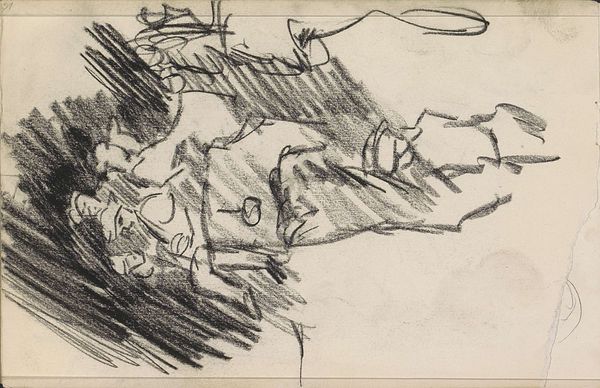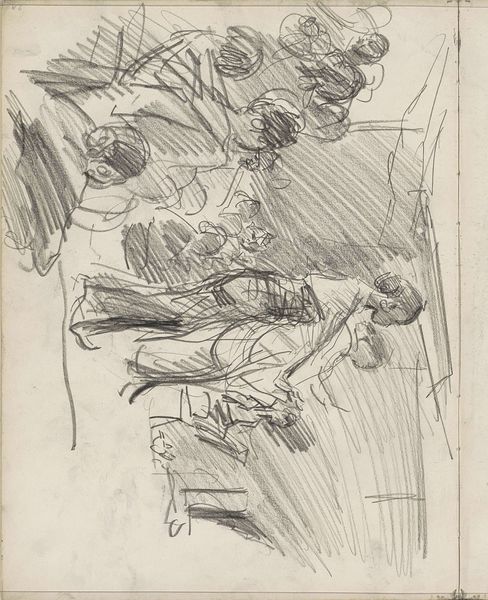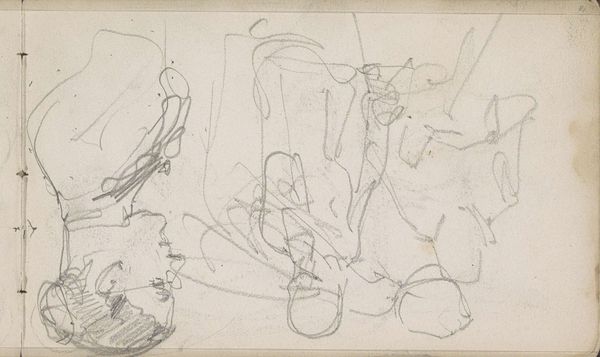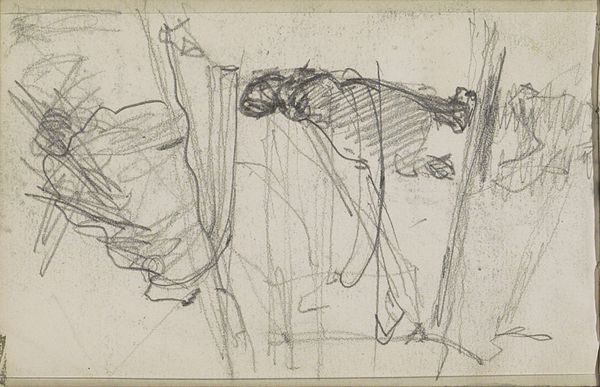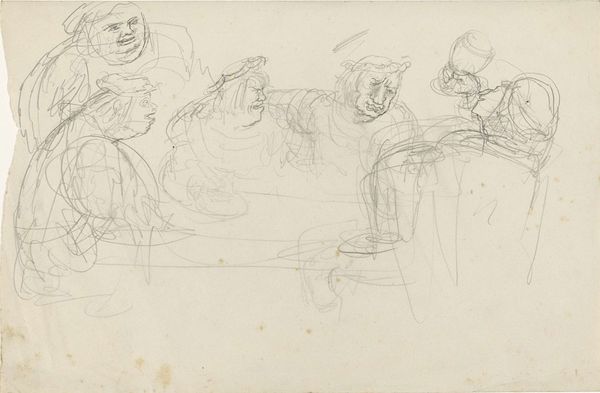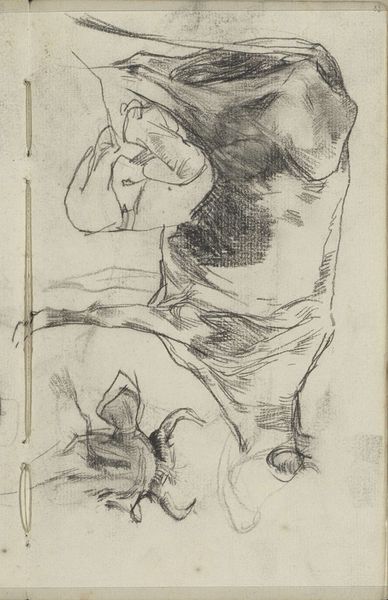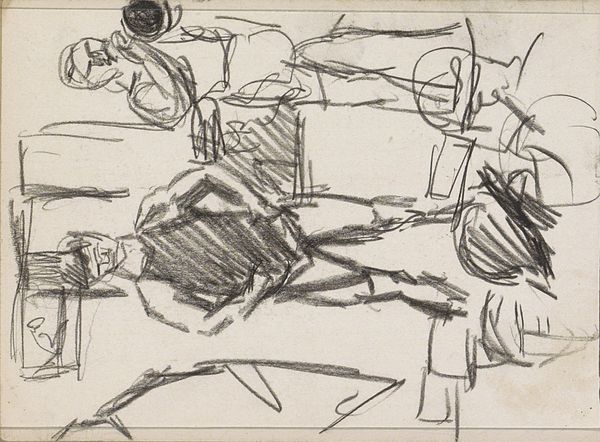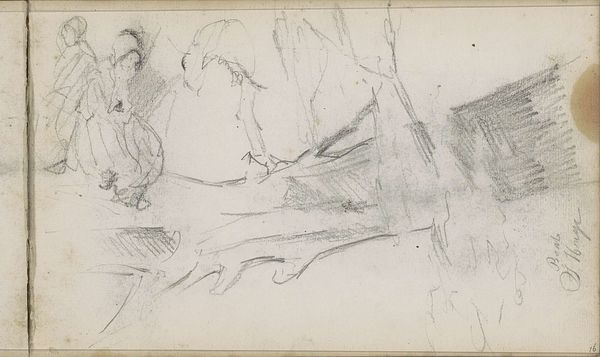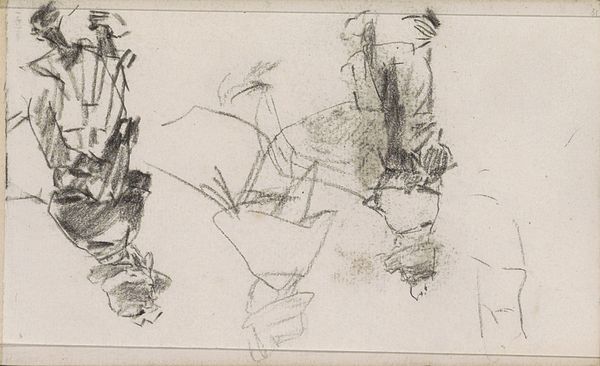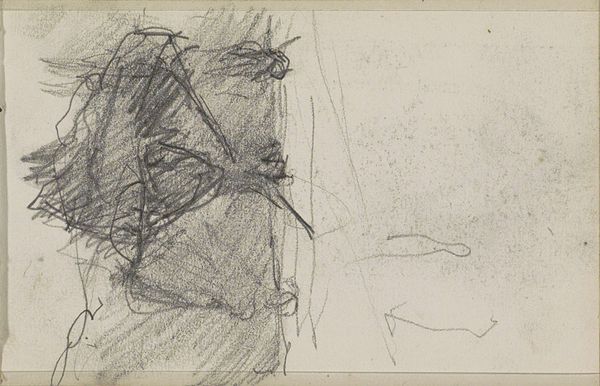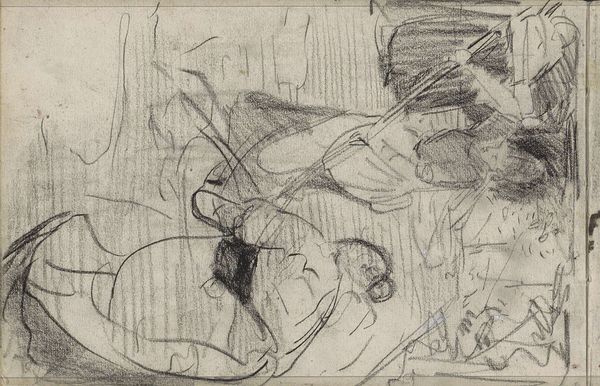
Dimensions: height 118 mm, width 196 mm
Copyright: Rijks Museum: Open Domain
Editor: Here we have "Two Women, Seen from the Back" by George Hendrik Breitner, made sometime between 1882 and 1912 using pencil on paper. It feels so fleeting, like a glimpse of a moment. What do you see in this piece? Curator: I see a potent snapshot of burgeoning modernity and shifting societal roles. Breitner, working during a time of intense urban transformation in Amsterdam, captures women not as idealized figures, but as anonymous individuals navigating the evolving cityscape. The fact that they are viewed from the back is significant; it denies the male gaze, allowing them a degree of privacy and autonomy. How do you think this anonymity might relate to the women’s lived experiences? Editor: That's interesting – I hadn’t thought about the denial of the male gaze as an active choice. I guess it makes them feel less like objects and more like subjects, even if we don't see their faces. Curator: Precisely. Consider the broader context. This period witnessed increasing female participation in the workforce and public life. Breitner's sketch, though seemingly simple, engages with complex themes of gender, class, and visibility. These women, rendered in pencil – a medium often associated with quick studies rather than formal portraits – might represent the everyday realities of working-class women, often overlooked in more traditional art forms. Do you think his choice of medium amplifies that reading? Editor: It does feel very immediate, almost like a stolen moment, not posed or constructed at all. It highlights their anonymity. Curator: Exactly. This piece acts as a silent commentary, inviting us to consider the historical and social forces shaping these women's lives, even without explicit details. And it encourages viewers to really confront issues about who is portrayed in art and how they are being portrayed. Editor: I now look at this unassuming sketch with fresh eyes, and I can appreciate its relevance in stimulating vital conversations about women and representation. Thanks for pointing it out! Curator: My pleasure! Art is a continuous dialogue with the world and those represented (and not represented) in it.
Comments
No comments
Be the first to comment and join the conversation on the ultimate creative platform.

